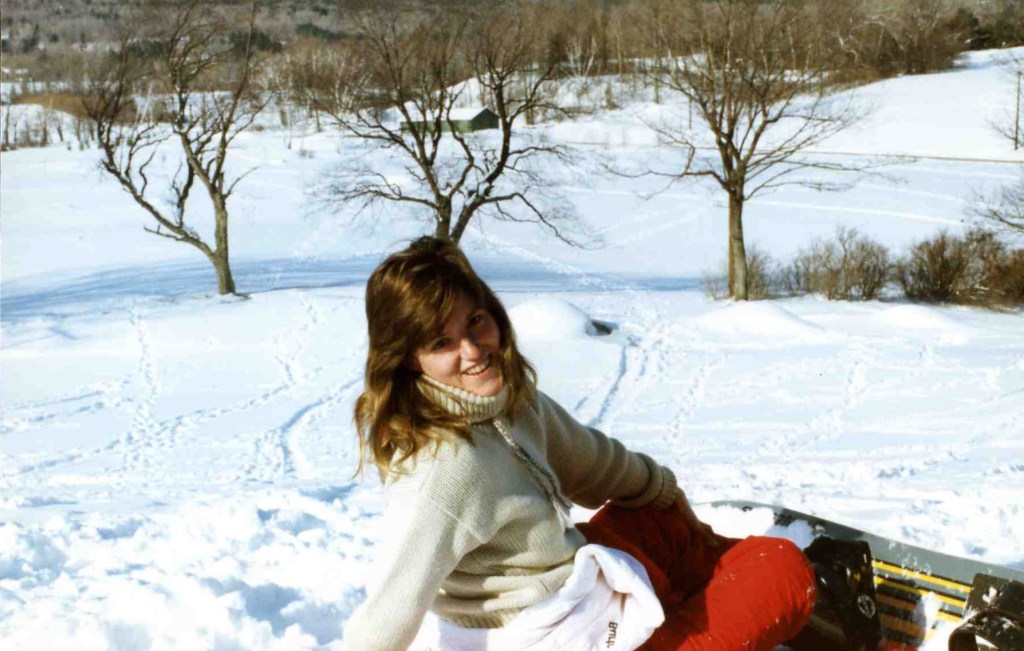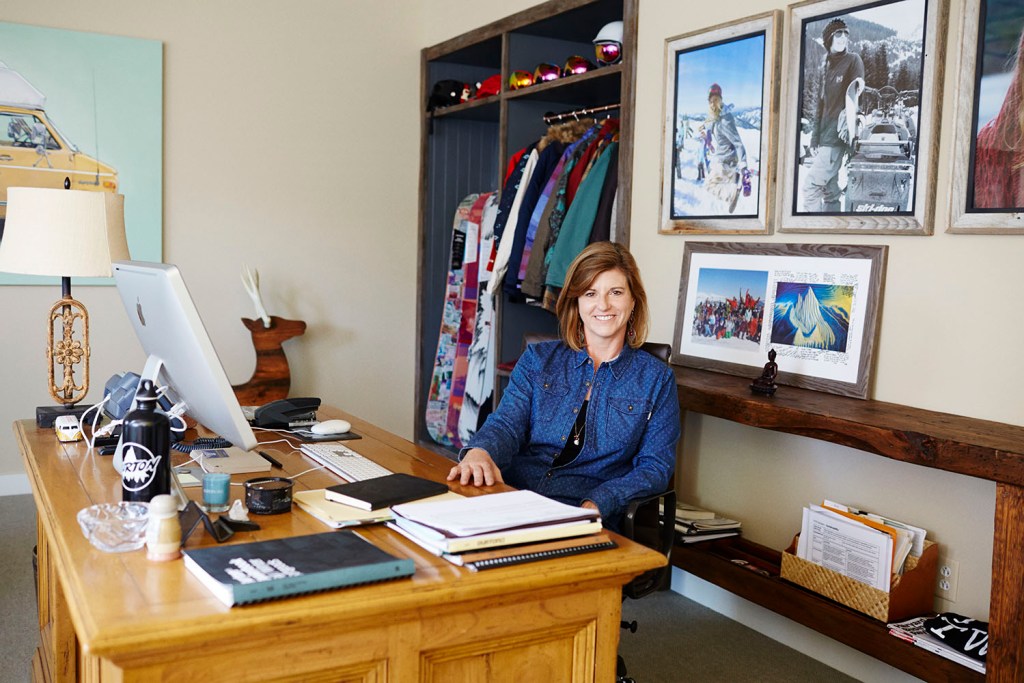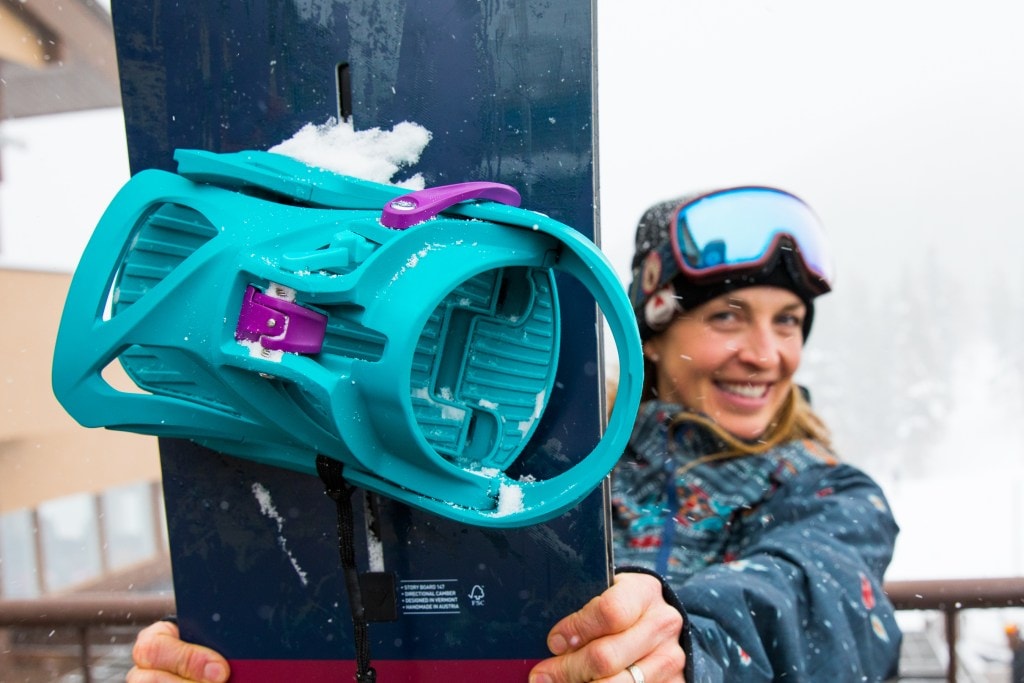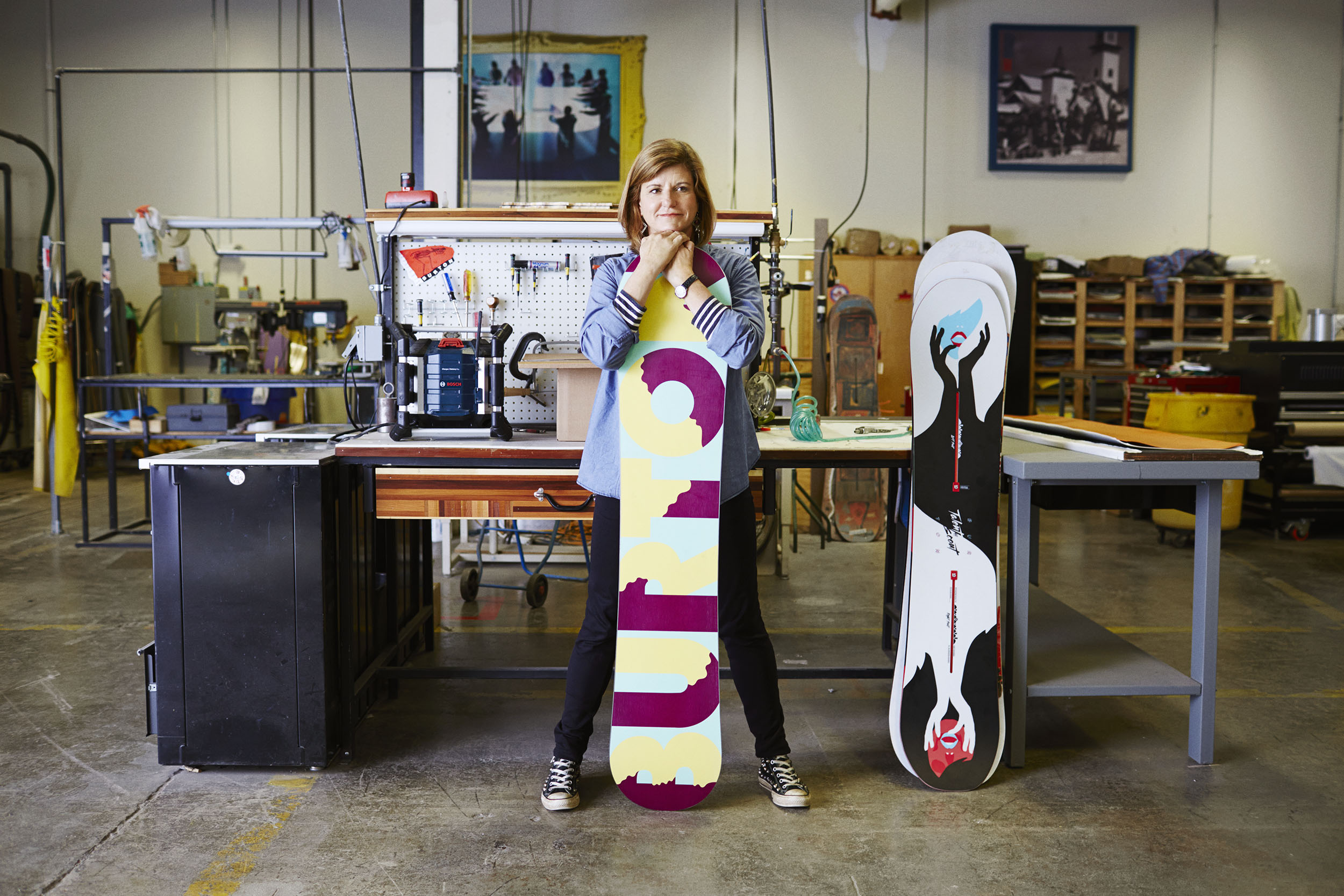“When you become a better place for women to work, you become a better place for everybody to work.”
It’s late September and while fall temperatures have been unseasonably warm at Burton headquarters in Burlington, Vermont, news of the first snowfall at resorts across Colorado, Oregon and California signals the start of busy season. The annual cycle of research and development, product testing, production and distribution is culminating with the release of the company’s 2017-18 line of snowboard gear. Given the whirlwind of activity, CEO Donna Carpenter is unmistakably casual and characteristically upbeat as we talk.
A privately owned company with more than 800 employees globally, Jake Burton Carpenter, Donna’s husband, founded Burton Snowboards in 1977. It’s recognized industry-wide as a pioneering brand in the relatively young sport of snowboarding, which began in the mid-60s with the bindingless Snurfer board. Since the early days as a co-owner, Donna has been an integral part of the company, contributing to the worldwide growth of the sport, as well as advocating for women through Burton’s Women’s Leadership Initiative, an internal effort led by Donna to raise up women in the workplace.

Photo Courtesy: Burton
Jake and Donna met at a New Year’s Eve party in 1982 at the Mill Tavern in Londonderry, Vermont. The two married a year and a half later—it was the beginning of a nurturing personal and professional relationship, what Donna dubs her “accidental entrepreneur” career.
Over the past nearly four decades, Donna’s role at Burton has evolved along with the needs of the company and her growing family. Her first job was answering product order calls from their bedroom in the early 1980s while Jake made snowboards in the back barn. Donna went on to establish the company’s European sales and operations, and then served as CFO before taking a break from her day-to-day role to raise their three boys and launch her own business in 1992—the Harvest Market in Stowe, Vermont. Donna continued to remain actively involved with Burton in various roles throughout this time.
In 2009, Donna transitioned back to a full-time role overseeing international sales. Her career progressed from there: In 2011 she became company president, and in February of 2016 she advanced to the top position as CEO.

Photo Credit: Winnie Au
In her role as CEO, Donna has invested in and focused on product innovation, sustainability and gender equity. “Because we’re a private company, we can invest in what we want to invest in,” she said.
Burton’s focus on gender equity arose in 2003, at a time when Donna was away from Burton. It was Jake who realized during a global directors meeting that of the 25 people at the table, only three were women. “He knew at a gut level that something was wrong,” Donna said. She attributed the imbalance to the rapid growth of the brand and the hiring practices that followed. “We were pulling from the ski, skate and surf industries, and we kind of took on this male-dominated culture that we hadn’t planned for,” Donna said. “For me it was this ‘Oh, shit’ moment—women don’t feel welcome in this company or the snowboard community.” Donna jumped back in, taking on the title of founder and director of Burton Snowboards Women’s Initiatives.
“Because we’re a private company, we can invest in what we want to invest in.”
In 2004, Donna established Burton’s Women’s Leadership Initiative (WLI). “The idea was to pull key women from every department and say, ‘What are the short-term opportunities to increase women’s leadership here and what are the long-term things we should work on?’” What was expected to be a short-term focus group is now in its thirteenth year and has evolved over time.
The first issue the WLI focused on was the fact that women couldn’t envision a future at the company. “Women said they didn’t see themselves here 10 years from now with a family,” Donna said. In response, she introduced a generous maternity and paternity policy, which includes allowing for a caregiver to travel with new moms and dads on business trips for the first 18 months.
The initiative also addressed female employees’ appeal for mentors. “Women told me they craved a mentor. It happened sort of naturally for men, but when you’re the only woman in the room, it’s hard to find a mentor,” Donna said. So, she established a mentorship program in 2006 initially open to female employees. After just two years, 50 percent of the women who participated in the program had either been promoted or moved to a department that better aligned with their professional goals, according to Burton. Demand was high throughout the company for formal mentorship, so in 2010 Burton expanded the program to be co-ed.
Today, there are 121 active mentor and mentees, including Carly Robbins, a mentee in Burton’s products group. She attributes her mentor, an executive with two decades of experience at the company, with not only providing encouragement and reassurance, but also helping her see beyond short-term goals and focus on her future. The insight and guidance has been invaluable, shares Carly, “I’ve found it a critical building block for my career path here at Burton, and I’m so grateful to have been given access to this incredible resource.”

The successful WLI program continued to evolve to include recruiting practices. Donna created a policy requiring hiring managers for leadership positions to include at least one woman among the finalists. That policy allowed Burton to go from under 10 percent female leadership in 2004 to more than 40 percent today.
“When you become a better place for women to work, you become a better place for everybody to work,” Donna said.

The new Burton Step On™ boot-to-binding connection system (Photo Credit: Gabe L’Heureux)
The benefits of this intentional focus on gender equality at Burton is on display with the release of the new Burton Step On™ boot-to-binding connection system. The technology allows riders to start descending immediately after getting off the chairlift, eliminating the inconvenience of having to stop and lean over, or sit down to buckle snowboard boots into bindings.
Chris Cunningham, global vice president of product at Burton refers to the Step On™ project as a platform level project at Burton—the highest level crossing over all categories with a dedicated team of six engineers, four years in the making. Cunningham says historically, a massive product development like this would have originated in the men’s category. “We tended to be male dominated. It was just easier to get men’s figured out and then adapt it for women,” he said. “Donna called that out and with the Step On™; she had us considering men and women simultaneously.”
Right from the beginning, the engineers stretched the scope to include all size ranges from a women’s 4 to a men’s 13. Through the process, the team was able to catch potential issues that could have impacted women’s experience with the Step On™ system. Cunningham says they discovered during testing that women weren’t able to step in to the forward toe clip with the same ease as the heavier men. A solution was implemented with an easy materials adjustment.

“I really believe you cannot address the women’s market unless you have women in strategic decision-making roles who are really shaping what’s going out there,” Donna says. (Photo Credit: Gabe L’Heureux)
Outside of product innovation and internal programs, Burton has led the way in gender equality by setting an example within the industry. The annual Burton U.S. Open Snowboarding Championships, now in its 36th year, has awarded equal prize money to men and women since its inception. More recently, following last year’s presidential election, Burton covered employees’ costs to attend the Women’s March on Washington in January 2017. And the company continues to educate and encourage the next generation of new female riders through its Learn To Ride program and Chill Foundation, a nonprofit founded by Donna and Jake.

Burton employees attended the 2017 Women’s March in Washington, D.C. (Photo Credit: Jesse Dawson)
It’s not clear whether you can draw a straight line from Burton’s progressive equality policies to this past winter’s all-time-high snowboarding participation figure of 847,000 for female boarders ages 17 and under—a 9 percent year-over-year increase, according to Snowsports Industries America. But what is clear is that women today can see themselves as snowboarders. And Burton, thanks to an authentic effort and the vision of its CEO, is there to give them that push to get on board.
